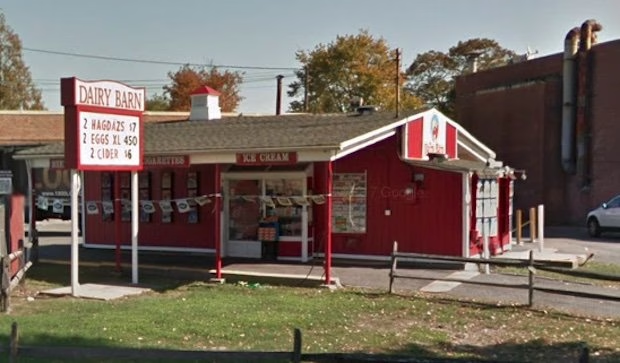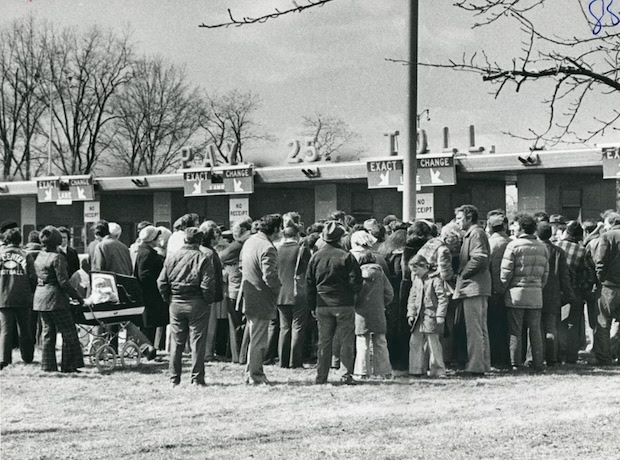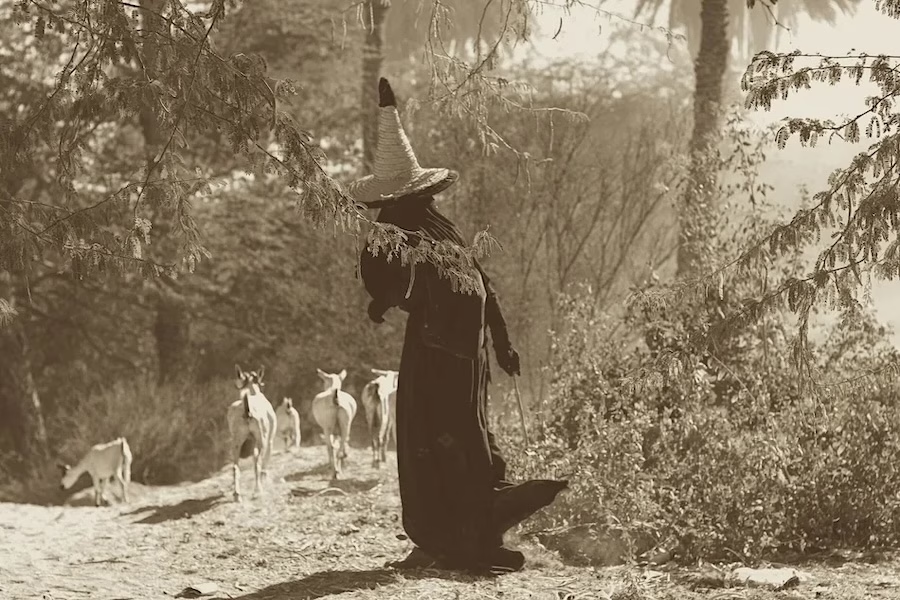Before Amazon trucks and online grocery apps, Long Islanders had a simpler solution for last-minute milk, eggs, and whatever else Mom forgot: they just drove through Dairy Barn – the red-roofed roadside icon that practically raised three generations of suburban snackers.
It all started with a Swiss immigrant and a struggling dairy farm. Add in a second-generation pivot, a few fires (literally), some Greek pastries, and a pandemic twist and you’ve got one of the most beloved and bizarre business sagas in Long Island history.
The Origins of Dairy Barn: From Swiss Roots to Suburban Innovation
-
In 1939, Swiss immigrant Edgar Cosman bought Oak Tree Dairy in East Northport.
-
Originally sent to the U.S. to work in one of his father’s factories, Cosman got stuck here when World War II broke out.
-
When the dairy started losing money, Edgar turned to his son Dieter Cosman to figure it out.
-
Dieter made the dairy profitable again, but milk delivery was going out of style.
-
So in 1961, Dieter launched a new idea: a drive-thru convenience store.
That idea became Dairy Barn and it would go on to become a Long Island legend.
Red Silos, Early Morning Runs, and Lots of Pajamas
-
Every location had the same setup: a red barn-shaped store, a small silo, and two covered driveways.
-
It was Long Island’s first drive-thru convenience store.
-
At its height, there were about 70 Dairy Barns across the Island.
-
As late as 2015, there were still 51 locations in operation.
-
The model was pure suburban genius, quick in-and-out for essentials without leaving the car.
-
As one clerk at the Syosset location told The New York Times, “We see at least 10 people a day in pajamas.”
-
Company president Hari Singh once described the chain as “as far as you can get from the superstore experience.”
Disaster Strikes and the Brand Evolves
-
In 1997, a fire tore through the Oak Tree Dairy plant.
-
Fortunately, no one was hurt but the rebuild took a full year and cost $11 million.
-
At the time, Oak Tree Dairy was producing over 21 million gallons of milk a year.
-
Eventually, the Cosman family sold the original East Northport property.
-
The 37-acre farm was redeveloped into a 55-and-over condo community.
Rebranding & Mergers
-
In 2010, a father-daughter team from Long Island Mike and Aegina Angeliades acquired 38 locations.
-
They rebranded the stores as The Barn under their company, Simi Enterprises.
-
Of course, most Long Islanders kept calling them Dairy Barn, whether they were or not.
-
In fact, many other drive-thru stores with red barns are still mistakenly referred to as Dairy Barns to this day.
Things took another turn in 2019:
-
The Barn merged with a company called Greek From Greece (GFG).
-
Their idea? Convert 30 locations into GFG Express stores featuring Greek-imported snacks, coffee, and products.
-
The timing worked out, drive-thru businesses thrived during the pandemic.
-
At one point, GFG listed 23 Long Island locations online.
But the partnership didn’t last:
-
In November 2022, GFG returned the stores to Simi Enterprises.
-
Soon after, 17 former Dairy Barn properties were put up for sale.
-
Some are now being repurchased or leased by local entrepreneurs bringing back Dairy Barn-style drive-thrus.
-
Simi still operates a few locations, including in Huntington.
A Final Fact You Probably Didn’t See Coming
-
Dieter Cosman, founder of Dairy Barn, was also an avid scuba diver and shell collector.
-
His personal collection included 117,000 shells, which were later donated to Occidental College.
-
The collection remains valuable for scientific research, giving Cosman an unlikely legacy in marine biology.
The Legacy Lives On
Dairy Barn wasn’t just a store, it was a ritual. A car ride. A late-night snack run. A place where Long Islanders could grab milk, eggs, and a pack of gum in their slippers without shame.
Even if the red barns are fewer and farther between today, the memory of that drive-thru convenience, and the small-town charm that came with it, still lives on in Long Island’s cultural DNA.
Photo: Google Maps.




